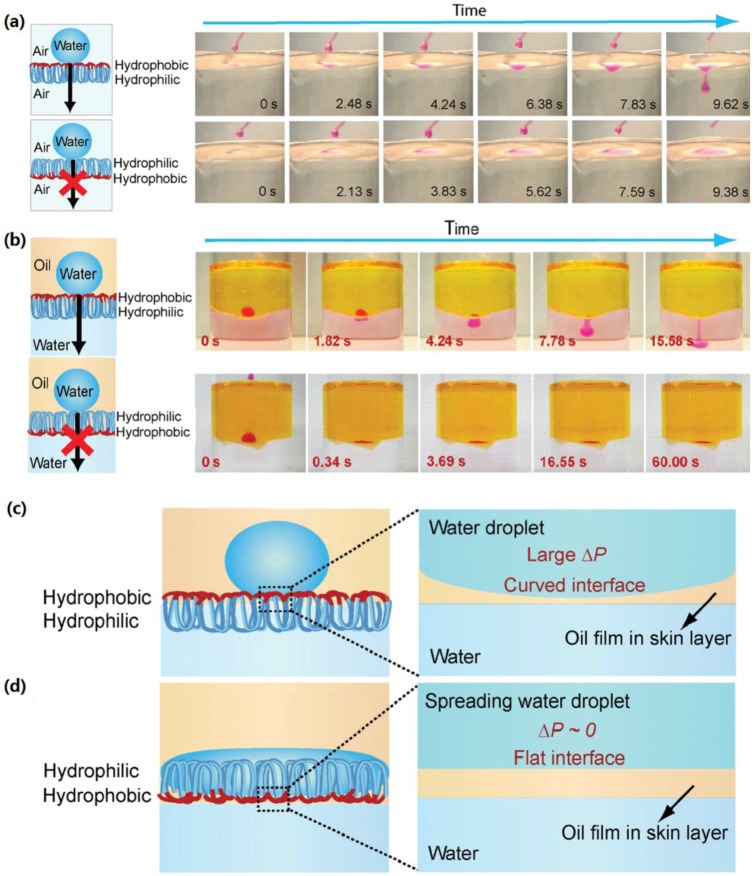Figure 18.
(a) Unidirectional droplet penetration demonstrated by dropwise addition of water droplets (droplet dyed red with rhodamine 101) onto hydrophobic side (top) and hydrophilic side (bottom) of Janus-C in air-water systems; (b) Janus-C allows penetration of water droplet (dyed red) when the hydrophobic side is towards oil (hexadecane dyed yellow by Nile red), and prevents droplet penetration when reversely aligned in oil-water systems; (c) For positively aligned Janus-C, a water droplet touching the hydrophobic side exerts a larger Laplace pressure (ΔP), creating a larger driving force for penetration. Consequently, the water droplet can penetrate through the thin oil-infused skin layer and further across the whole membrane; (d) For reversely aligned Janus-C, a water droplet touching the hydrophilic side tends to spread, exerting limited Laplace pressure. The oil-infused skin layer is thus able to block its penetration. (Reprinted from Reference [179] with permission).

